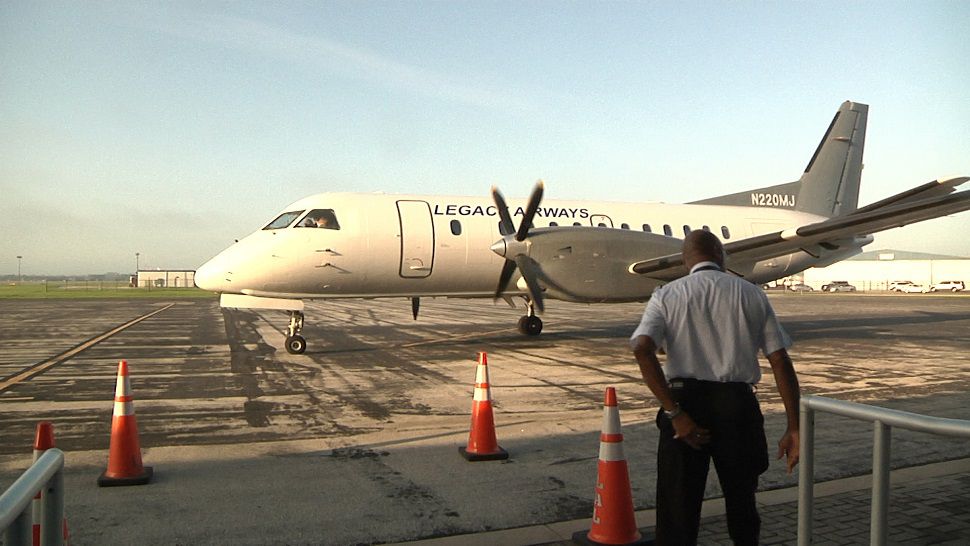

As late as November 1959 the airport had four 5,500 ft (1,700 m) runways at 45-degree angles, the north–south runway eventually being extended into today's runway 18C/36C. The April 1957 Official Airline Guide shows 97 weekday departures: 37 American, 26 Delta, 24 TWA, 8 Piedmont, and 2 Lake Central. A Delta Air Lines flight followed moments later. The first commercial flight, an American Airlines DC-3 from Cleveland, landed on January 10, 1947, at 9:53 am. Boone County Airlines was the first airline to provide scheduled service from the airport and had its headquarters at the airport. On October 27, 1946, a small wooden terminal building opened and the airport prepared for commercial service under the name Greater Cincinnati Airport. However, this was not before the first regularly scheduled air freight shipment in the United States arrived in mid-September, signalling the future importance of the airport.

As the tide of the war had already turned, the Air Corps only used the field until it was declared surplus in 1945. The field opened August 12, 1944, with the first B-17 bombers beginning practice runs on August 15. In October 1942, Congress provided $2 million to build four runways. Boone County officials offered a suitable site on the provision that Kenton County paid the acquisition cost. Officials from Boone, Kenton, and Campbell counties in Kentucky took advantage of Cincinnati's short-sightedness and lobbied Congress to build an airfield there. Federal officials wanted an airfield site that would not be prone to flooding, but Cincinnati officials hoped to build Lunken into the region's main airport. Lunken opened in 1926 in the Ohio River Valley it frequently experienced fog, and the 1937 flood submerged its runways and two-story terminal building. At the time, air traffic in the area centered on Lunken Airport just southeast of central Cincinnati. This was part of the United States Army Air Corps program to establish training facilities during World War II. Roosevelt approved preliminary funds for site development of the Greater Cincinnati Airport on February 11, 1942. CVG is currently the 6th busiest airport in the United States by cargo traffic, and is additionally the fastest-growing cargo airport in North America. The airport is a global hub for Amazon Air, Atlas Air, ABX Air, Kalitta Air, and DHL Aviation, handling numerous domestic and international cargo flights every day. Ĭurrently, Cincinnati/Northern Kentucky International Airport offers non-stop passenger service to over 50 destinations in North America and Europe. CVG covers an area of 7,700 acres (3,100 ha). The airport's code, CVG, is derived from the nearest city at the time of its opening, Covington, Kentucky. Cincinnati/Northern Kentucky International Airport ( IATA: CVG, ICAO: KCVG, FAA LID: CVG) is a public international airport located in Hebron, Kentucky, United States.


 0 kommentar(er)
0 kommentar(er)
